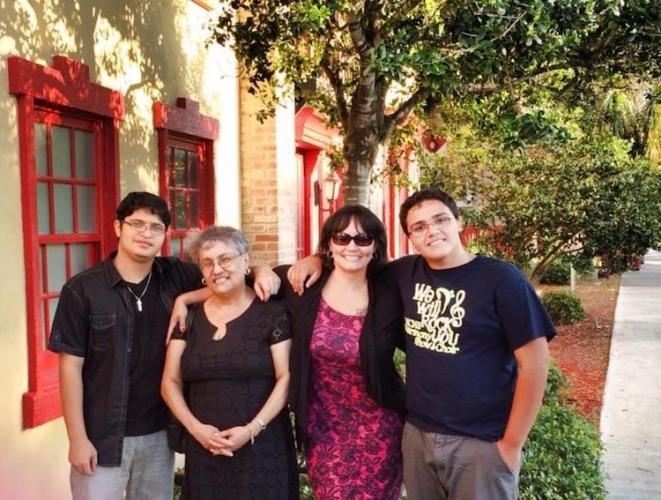Miriam Moreno Santiago was picking up her mother’s luggage in Orlando, Florida, when she was told she wouldn’t be able to see her. They would be taking her directly from the airplane to the hospital because she was having trouble breathing. María Isabel Santiago Colón, her 68-year-old mother, lived in Brooklyn, New York, but health complications and her age drove her to move South with her daughter. However, her journey changed. Miriam was allowed to see her mom virtually every day. She was able to read biblical passages and put on her favorite church music. But, there was no parting hug. Santiago Colón died of complications from COVID-19 on April 21. Miriam was able to perform a virtual ceremony in honor of her mother.
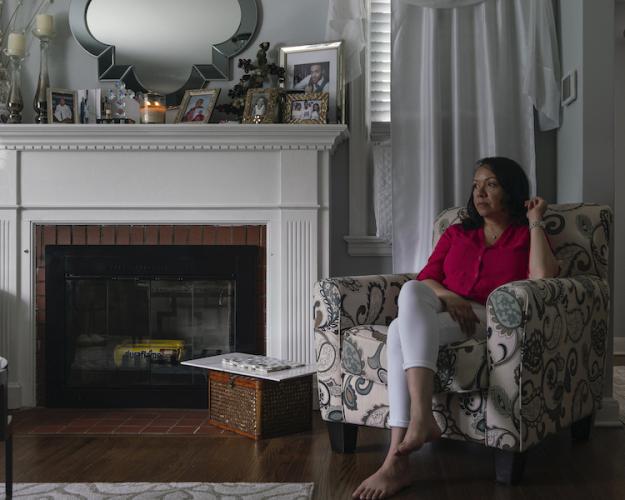
In New Jersey, Madelyne Osorio also lost her mother, Carmen María Osorio, 71. Although she had asthma, something else was wrong. She went to St. Michael’s Medical Center, but she was not tested for COVID-19, “because at that time not all hospitals had access to the tests.” Her daughter said that two hours later her mother was sent home. She lamented that they could not rule out that her mother had influenza, because they did not run that test either. Days passed and her health situation worsened. “She was dehydrated,” Madelyne said in a slow tone and as if choosing the words that hurt the least to remember the event. On April 12 there was no going back. Carmen María was taken to another hospital, the Saint Barnabas Medical Center, she was left in the emergency room and her daughter never saw her up close again. Like Miriam, a video call served as a good-bye.
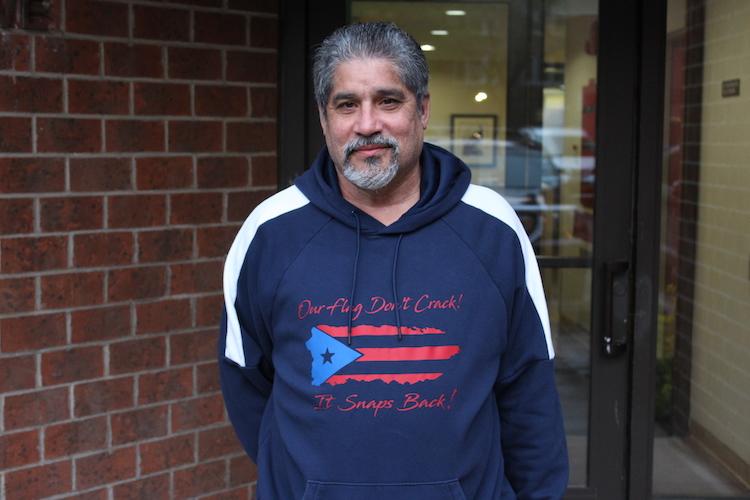
William Sánchez Vargas, in New York, experienced a different outcome. He was infected with COVID-19 but survived. His voice inevitably cracks, and he cries hopelessly upon remembering. “I had a fever. I had no appetite. I haven’t eaten in more than two weeks. I couldn’t sleep at night, and sometimes, I don’t know if it was because of the fever, I was hallucinating,” he recalled through tears.
In his case, he called the New York City emergency number, but was never seen, despite reporting that he had symptoms of COVID-19. He went to a private doctor and paid for the test, which was positive. Two weeks later, the Government contacted him to find out if he had a car to take him to where they were doing the tests. There was never an effort to trace contacts and find out if his family was having symptoms. The cases of these Puerto Ricans, aside from taking place in the three states with the largest Puerto Rican populations in the United States — Florida, New York, and New Jersey — also happened in three of the areas where there is the greatest possibility of contagion and death from COVID-19.
A Center for Investigative Journalism (CPI, in Spanish) investigation found that the geographical areas with the highest number of COVID-19 infections and deaths coincide with the counties with the highest proportion of Puerto Ricans in the United States. This trend occurs when analyzing the rates of infection and deaths in the 594 US counties with more than 100,000 inhabitants. Despite the trend, when looking at counties individually, there are some with a high proportion of Puerto Ricans but with low rates of COVID-19 infection and death. Likewise, there are other counties with a low proportion of Puerto Ricans but with high rates of infection and death.
It was not possible to determine if there is a higher number of infected Puerto Ricans when compared to other minority populations, since the nationality of those who have been tested for COVID-19 or who have died from the virus is not documented. The investigation includes data available until May 31, which may vary when new information is registered with delay.
Puerto Ricans are more vulnerable in urban areas in the US
Puerto Rican populations in the United States live mainly in urban areas, according to Census data. In these counties, Puerto Ricans tend to face specific challenges, such as, being considered a racial minority, high unemployment, and limitations in English proficiency, the CPI found. The counties with the most Puerto Ricans in Florida, New York and New Jersey are also the most socially vulnerable when compared to the rest of the counties in these states, the investigation uncovered.
For the analysis, the CPI used information from the Social Vulnerability (SVI) produced by the Centers for Disease Control and Prevention (CDC) based on Census data. This index evaluates 15 social factors grouped into four themes: socioeconomic level; housing composition; minority status and language; and housing type and transportation. When reviewing the correlation between certain vulnerability factors and the rates of COVID-19 infections and deaths in counties with more than 100,000 residents, the conclusion was that it was not related to the phenomenon of poverty. It was related though to a particular type of poverty, urban poverty, according to Luis A. Avilés, a PhD in public health.
This is evident in Fresno County, California, an area with a high proportion of people living below the poverty level (28%), which has a low rate of COVID-19 infections and deaths. “The very nature of economic activities in Fresno, agricultural companies, suggests that contagion and deaths from this disease are increasing with urban poverty,” said Avilés.
“Contagion mechanisms are intensified by urban poverty, unlike what happens among poor workers in the agricultural industries. You have to remember that at the onset of discussions to reopen the economy [in the United States], it was believed that the agricultural and construction industries should open first because they represented a low risk of contagion,” said Avilés, who is also a biostatistician.
Poverty is measured based on a family’s income and the number of members, Avilés explained. For example, “a family of four earning less than $2,200 a month is considered to be below the poverty level.” Typically, geographic areas with high levels of urban poverty coincide with a factor associated with COVID-19 infection: overcrowding, which occurs when there are more people than rooms in a house. People living in overcrowded conditions find it very difficult to practice social distancing, one of the main recommendations by entities such as the CDC and the World Health Organization (WHO) to avoid contagion.
John Lema, president of Latino Edification Multicultural Aid Center, north of Newark, NJ, explained that overcrowding is a challenge faced by communities in that area. Newark is a city in Essex County, where there is a large population of Hispanics, of which 7% are Puerto Rican. “The levels of infection and contagion in these areas have been quite high, not because people have not followed the government’s rules, but because we have many buildings occupied by many families,” Lema explained, specifically referring to the area with the 07104 zip code, where the rate of infections until June was 2,972 cases per 100,000 inhabitants, and the death rate of 247, according to New Jersy Department of Health data.
Puerto Ricans among the populations with the highest chances of infection and death in New York
William Sánchez Vargas is 57 years old and manages four apartment buildings for the elderly or disabled in the Bronx. He says that about 16 people have died there from COVID-19. He also learned about the death of at least 10 close friends. New York is the epicenter of infections and deaths from this virus in the United States. The first case was reported on March 1. As of May 31, the number of infections in the state totaled 370,770, and 28,688 deaths. As of June, 17% of people killed by COVID-19 were African-American and 14% Hispanic, according to the New York State Department of Health.
This data does not include New York City, where Hispanic and African American deaths from the virus are 34% and 28%, respectively. Although the rate of infection and hospitalization by COVID-19 is higher among the Black population, the death rate from this condition is higher in the Latino community in the city, where Puerto Ricans and Dominicans are the majority.
Héctor Cordero Guzmán, a doctor in sociology and demography, and professor at Baruch College at The City University of New York (CUNY), explained that this situation happens not just because of the number of Puerto Ricans and Dominicans in the area, but also because of the way in which they are grouped into specific communities and neighborhoods where they become the majority in those areas.
“When you’re the majority in a minority group, you have a higher risk of contagion due to the size of these populations. The counties in New York are low-income areas with a lot of social contact and with many people who are dedicated to the informal economy, selling on the street, cleaning industries, taxi drivers, among others,” Cordero Guzmán said.
He added that the way in which this state is organized in terms of housing, encourages communities, such as Puerto Ricans and Dominicans, to live in overcrowding, which prevents them from complying with social distancing. He also pointed out that due to the type of professions carried out by the residents of these communities, the option of staying at home “is a luxury they cannot afford.”
Sánchez Vargas was afraid to go to a hospital, because he knew of the collapse of the city’s health system under pressure with so many infections. “Since there are so many cases in the hospital, they put you on a stretcher in a corner and, because maybe you don’t have many symptoms, they won’t pay attention to you and they will go tend to others who really need it; and they leave you there to die,” said Sánchez, who was born in New York, and has family in the central mountains of Adjuntas, Puerto Rico.
New York, where a million Puerto Ricans live, is the state with the strongest relationship between the proportion of the Puerto Rican population and the rates of infection and death by COVID-19 across the United States, the CPI found when applying the statistical formula called Pearson correlation, which measures linear correlation between two variables and establishes that a trend is strong if the result exceeds 0.50.
The coefficient in contagions was 0.56 in New York, while the death rate yielded a result of 0.71. Even excluding the Bronx, which is the New York county with the most Puerto Ricans (19%), the trend in infections and deaths remains just as strong. Being considered a minority, not being fluent in English, not having a health plan, living in overcrowding conditions, and not having a high school diploma are factors of social vulnerability that could cause greater probability of contagion or death, the CPI found through interviews with Puerto Ricans in the three states, demographic data review, and by consulting experts.
“Hispanics represent the majority of deaths [in New York City],” US Surgeon General Jerome Adams said during a press conference at the White House on April 10. African American and Hispanic communities are more vulnerable to COVID-19 also due to pre-existing health conditions, Adams said. According to the CDC, COVID-19 is a higher risk condition for older adults and people of any age who have serious illnesses.
Biostatistician Rafael Irizarry Quintero, a Harvard T.H. Chan School of Public Health professor, added that “in the United States, [preliminary] recent studies find that obesity is the strongest death predictor among COVID-19 patients. In the United States, obesity is more prevalent among people with low income.” Adams said that African Americans and Native Americans “develop high blood pressure at much younger ages and it’s less likely to be under control and does greater harm to their organs.“
In the case of Puerto Ricans in the United States, Adams pointed out that these communities have high rates of asthma. According to 2017 data, 6.8% of adults over 18 in the Bronx have this condition. This county has the highest asthma rates, compared to Manhattan (4.6%), Queens (3.9), Brooklyn (3.7%) and Staten Island (1.7%). By mid-May, 15.888 COVID-19 deaths had been recorded in New York City. Of these, 12,571 people suffered from some chronic health conditions such as diabetes, asthma, cancer, respiratory diseases, immunodeficiency, heart disease, hypertension, kidney or liver disease, and obesity.
The Bronx, New York’s most vulnerable and affected county
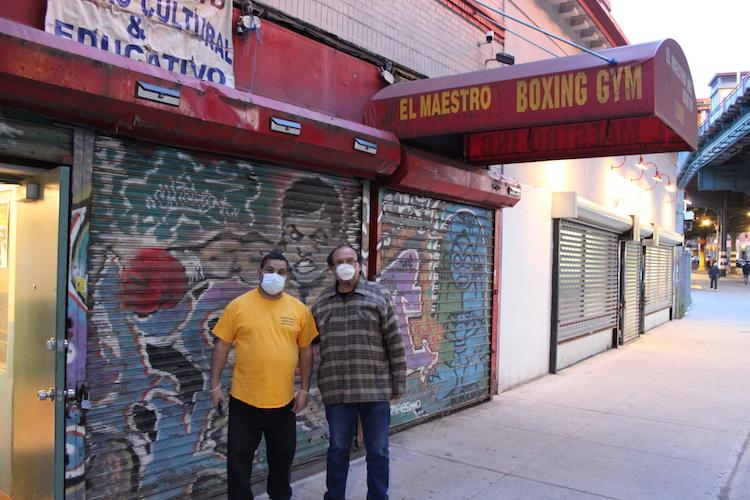
The Bronx was the county with the highest COVID-19 death rate and the fifth highest rate of infection in the entire United States, as of May 31. The legendary neighborhood that has received generations of Puerto Ricans since the 1930s, which today represent 19% of its population, is also the most vulnerable county in New York, according to the SVI.
The director of the El Maestro Cultural and Educational Center, in the south Bronx, Fernando Laspina Franco, mourned the death of many of his acquaintances in the area. He remembered Puerto Rican boxer and coach Nelson Cuevas, who died in late March. In 1976, Cuevas opened the Apollo Boxing Club, where he trained the famous, such as Mike Tyson. In fact, Tyson paid tribute to Cuevas on his Instagram account.
“We lost one of the best people in the boxing world. Nelson Cuevas died from complications with coronavirus. I had my first amateur fight at his Apollo Gym. I remember us kids would be so excited because when we had an exciting fight he would buy us soda and a mini hotdog in a biscuit because he knew we didn’t have money. Being around him during my amateur career was the best time of my life. Rest In Peace. End of an Era,” Tyson wrote. Laspina Franco also suffered the loss of close relatives by COVID-19. “I lost 12 cousins here in the Bronx, and I lost my nephew, who passed away in Chicago,” he said. Laspina Franco also suffered the loss of close relatives by COVID-19. “I lost 12 cousins here in the Bronx, and I lost my nephew, who passed away in Chicago,” he said.
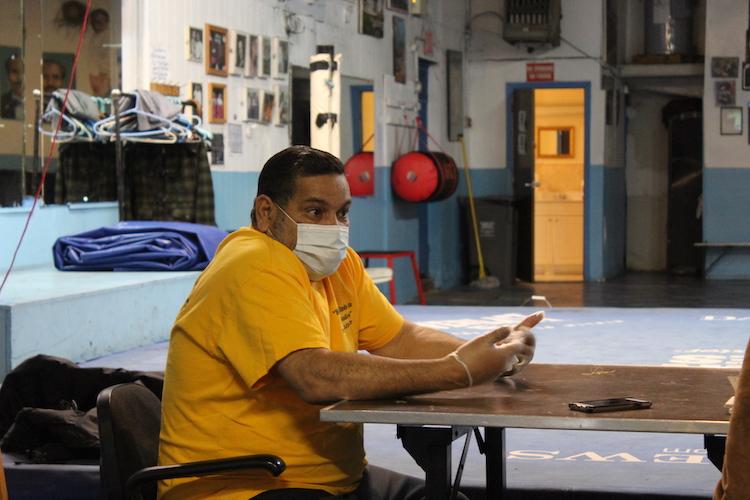
He explained that they face multiple social and health challenges in his neighborhood. According to the SVI, 29% of the Bronx population lives below poverty levels, 12% is over 65, and 10% has no health insurance. “Individuals we’ve found, who have diabetes and high blood pressure are at especially higher risk of bad outcomes from COVID, including dying,” said Dr. Oxiris Barbot, who is of Puerto Rican descent, and commissioner of the New York City Department of Health and Mental Hygiene, offering data that coincides with what the WHO has noted. According to the city, 36% of the population in the Bronx suffers from hypertension, 32% from obesity, 16% from diabetes, and 6% from asthma.
Puerto Ricans survive as best they can
Richard López Rodríguez is a 35-year-old Puerto Rican who lives in Far Rockaway, Queens, and works as a doorman in a building on Fifth Avenue in Manhattan. His hours are 3 p.m. to 11 p.m. Since the pandemic and curfew began in New York, López Rodríguez has not stopped working, and commutes daily on subway’s A line. “I take precautions for my brother, who is handicapped. I’m the one who exposes myself daily when leaving and returning. Except for that, my family stays at home, locked up, watching out that no one gets sick, especially my brother, because since he can’t speak, it would be hard for us to know if he got sick with this condition,” said López Rodríguez, who lives with his sister, his three nieces, and his brother.
